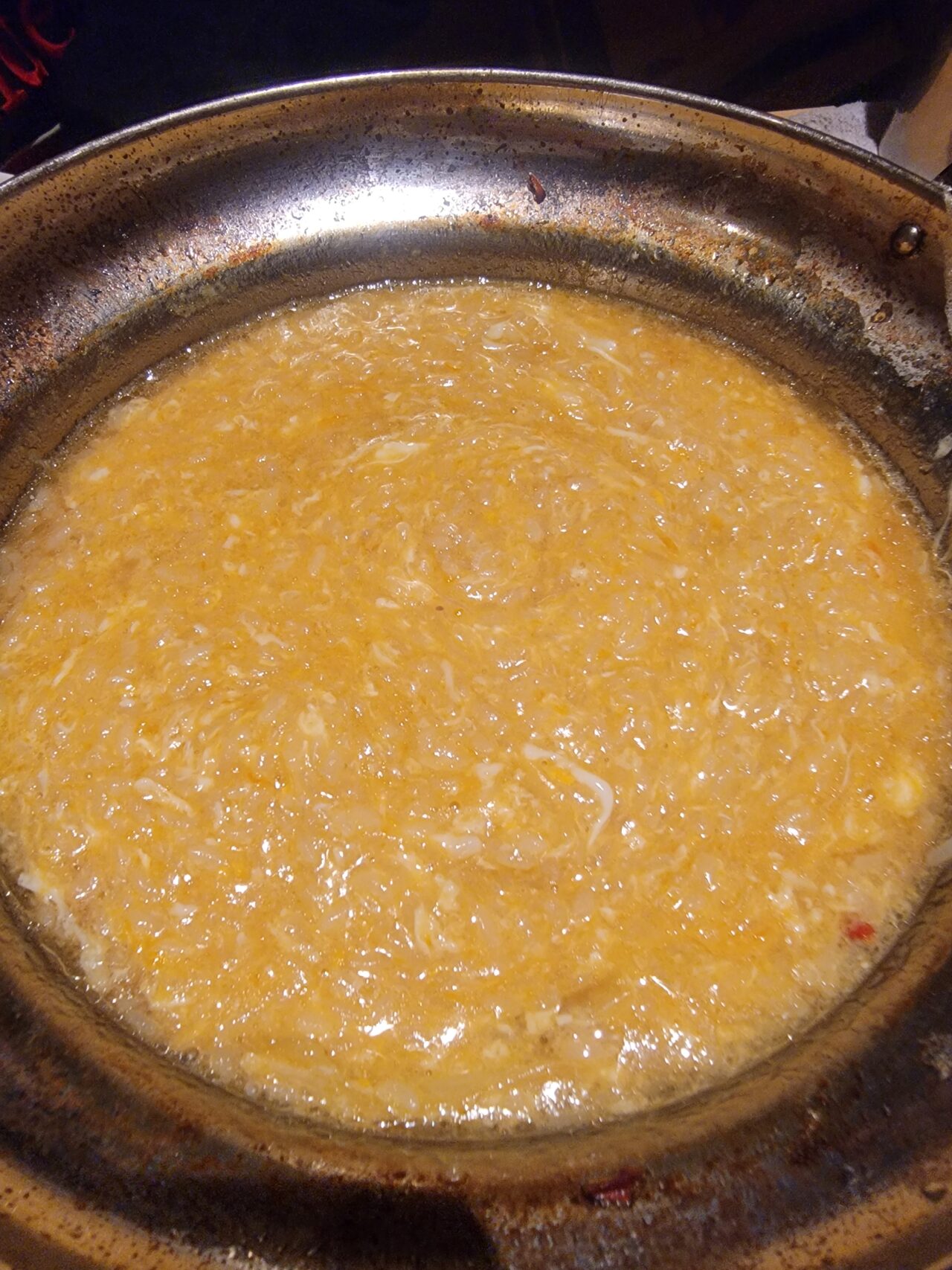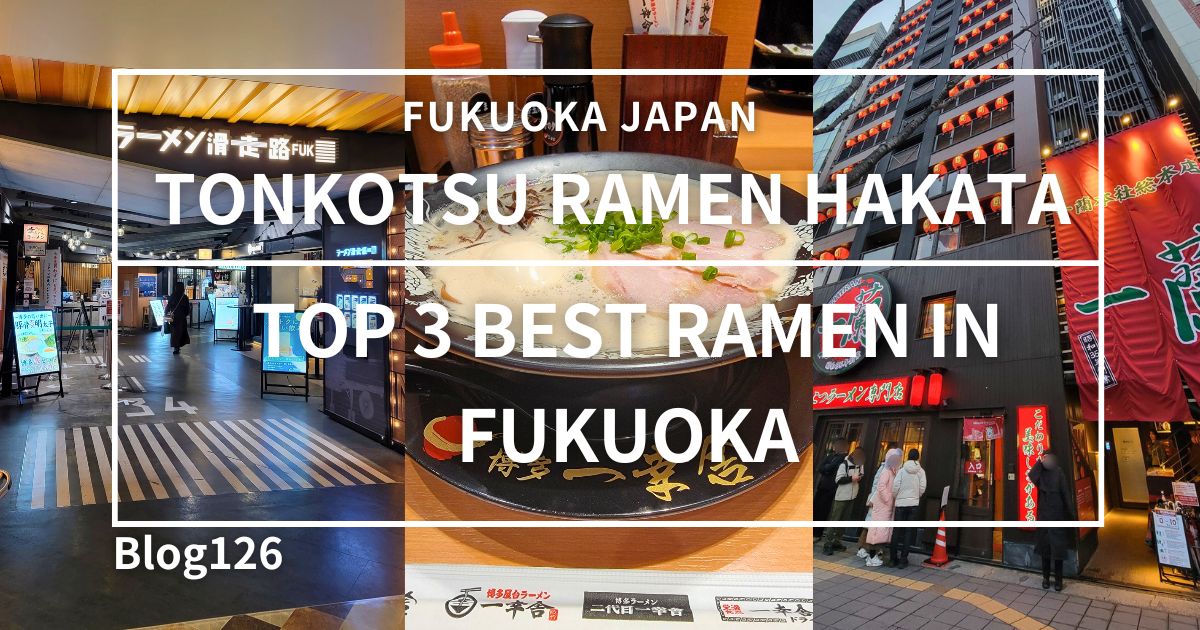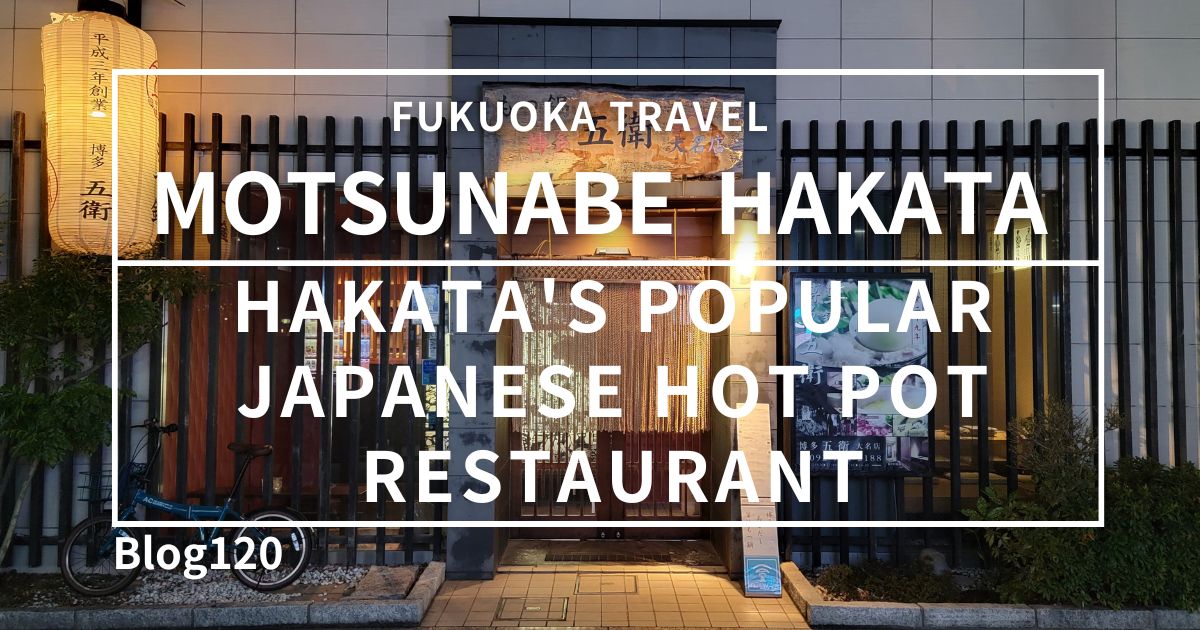I’m a travel and lifestyle blogger based in Okinawa, writing at @owncolorstravel .
While escaping the cold to relax at an overseas resort sounds tempting during Japan’s winter, there’s something comforting about domestic trips that let you experience the essence of “wa” (Japanese style).
So, to kick off the new year, I chose Fukuoka in Kyushu for my first trip of the year. It’s a quick domestic flight from Okinawa, taking about 1 hour and 40 minutes nonstop. And with that, my winter adventure in Fukuoka begins!
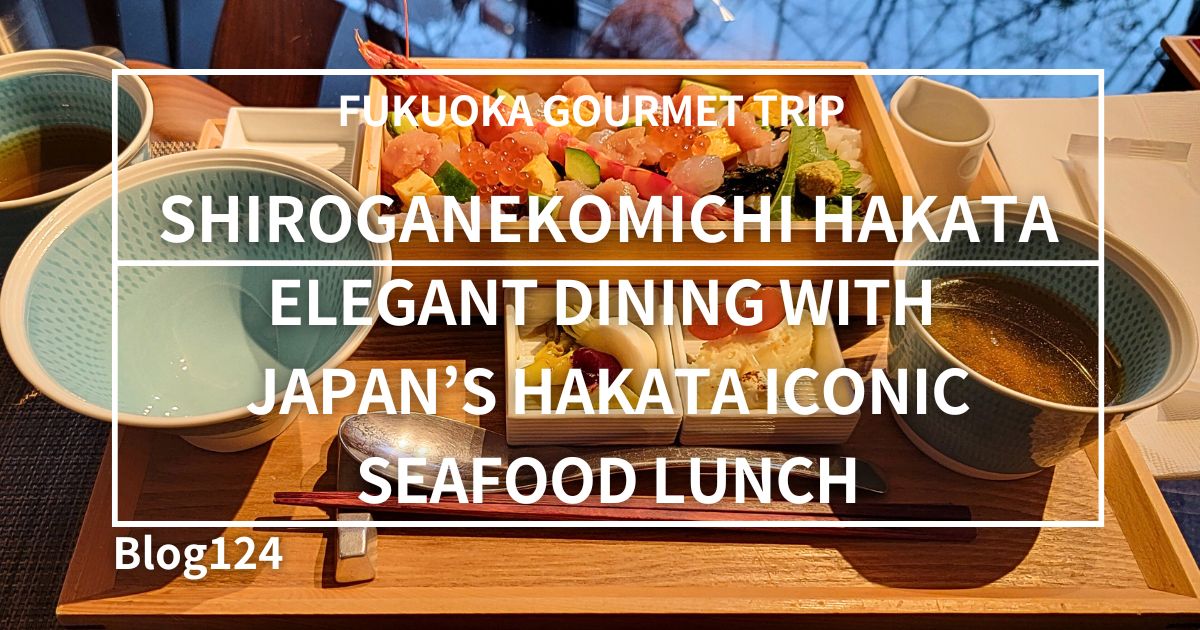
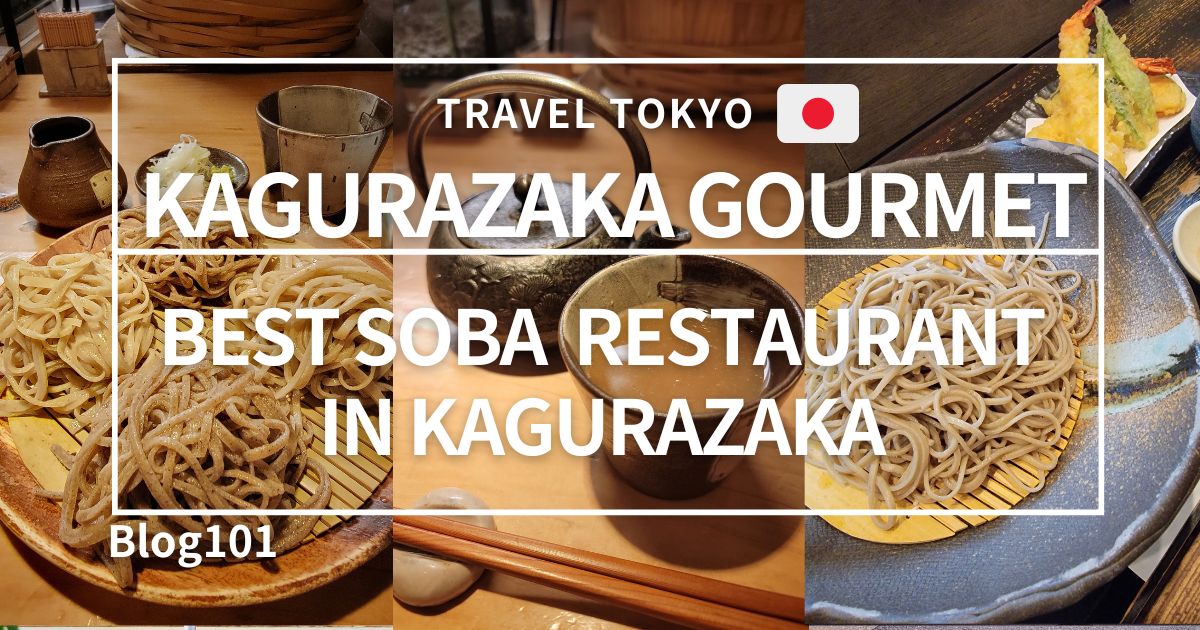
・Motsunabe Hakata Goe
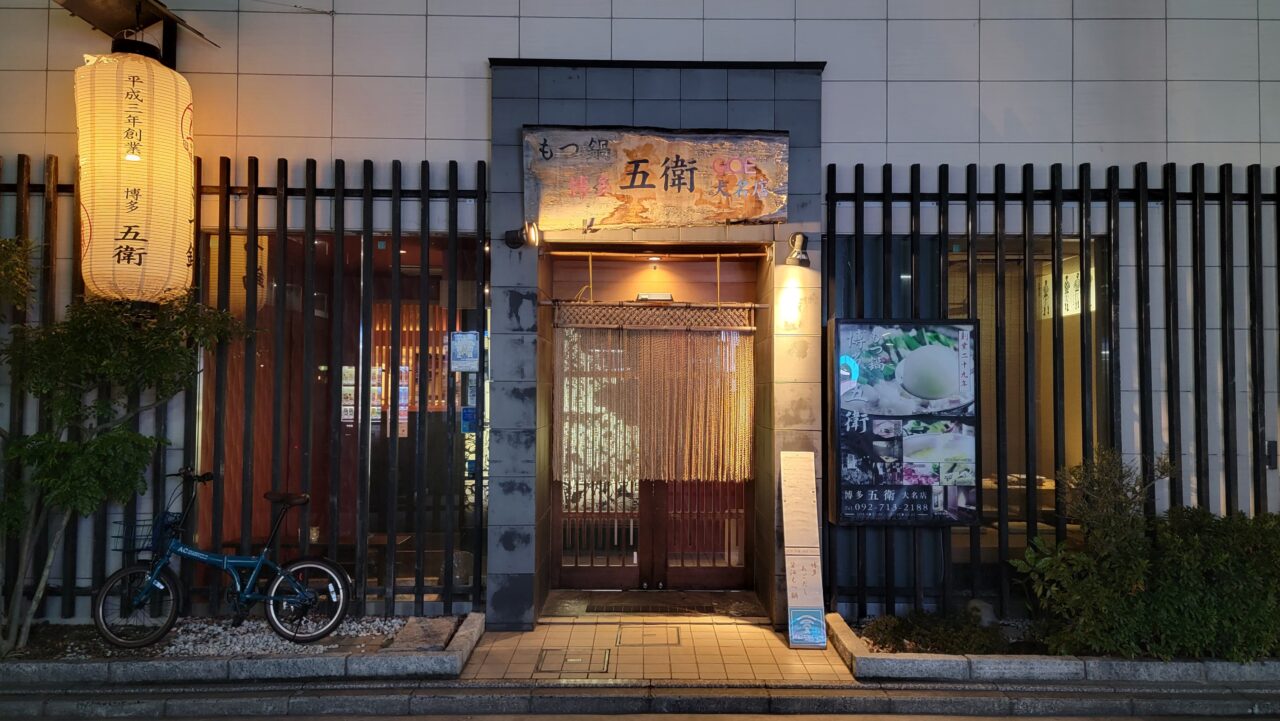
Motsunabe Hakata Goe Daimyo
1st Floor, Inishiaio Daimyo, 1-9-4 Daimyo, Chuo-ku, Fukuoka City, Fukuoka 810-0041, Japan
Daimyo is an area in Fukuoka’s Chuo Ward, located right next to Tenjin, the largest entertainment district in Kyushu. If you’re taking the subway, Akasaka Station or Tenjin Station are the most convenient stops. Getting around Fukuoka City is super easy—it’s just five stops (about 20 minutes) from Fukuoka Airport to Tenjin Station on the Airport Subway Line. You’ll be in sightseeing mode before you know it!
Daimyo is a lively area popular with young people, filled with stylish cafes, restaurants, and apparel shops. I came here on the recommendation of a local friend who told me about a great spot for motsunabe (a hot pot dish made with beef or pork offal).
Since my friend who lives here raved about it, I’ve got high expectations!
Actually, I had planned to visit a food stall that day, but when I got there, it was unexpectedly closed. So I quickly switched plans and decided to check out this motsunabe place instead. Lesson learned—always double-check the latest updates on Instagram or other social media!
・A restaurant with private rooms
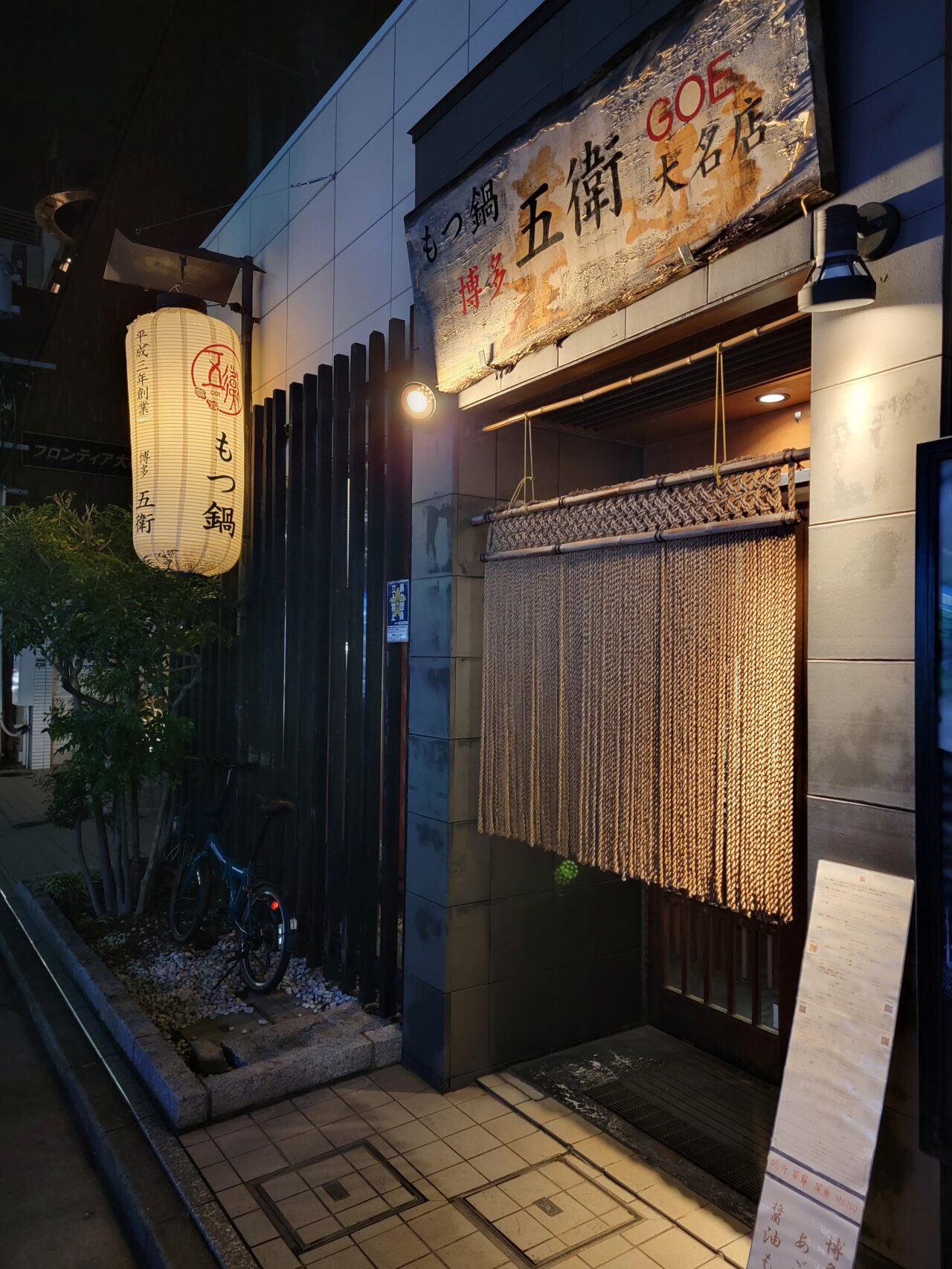
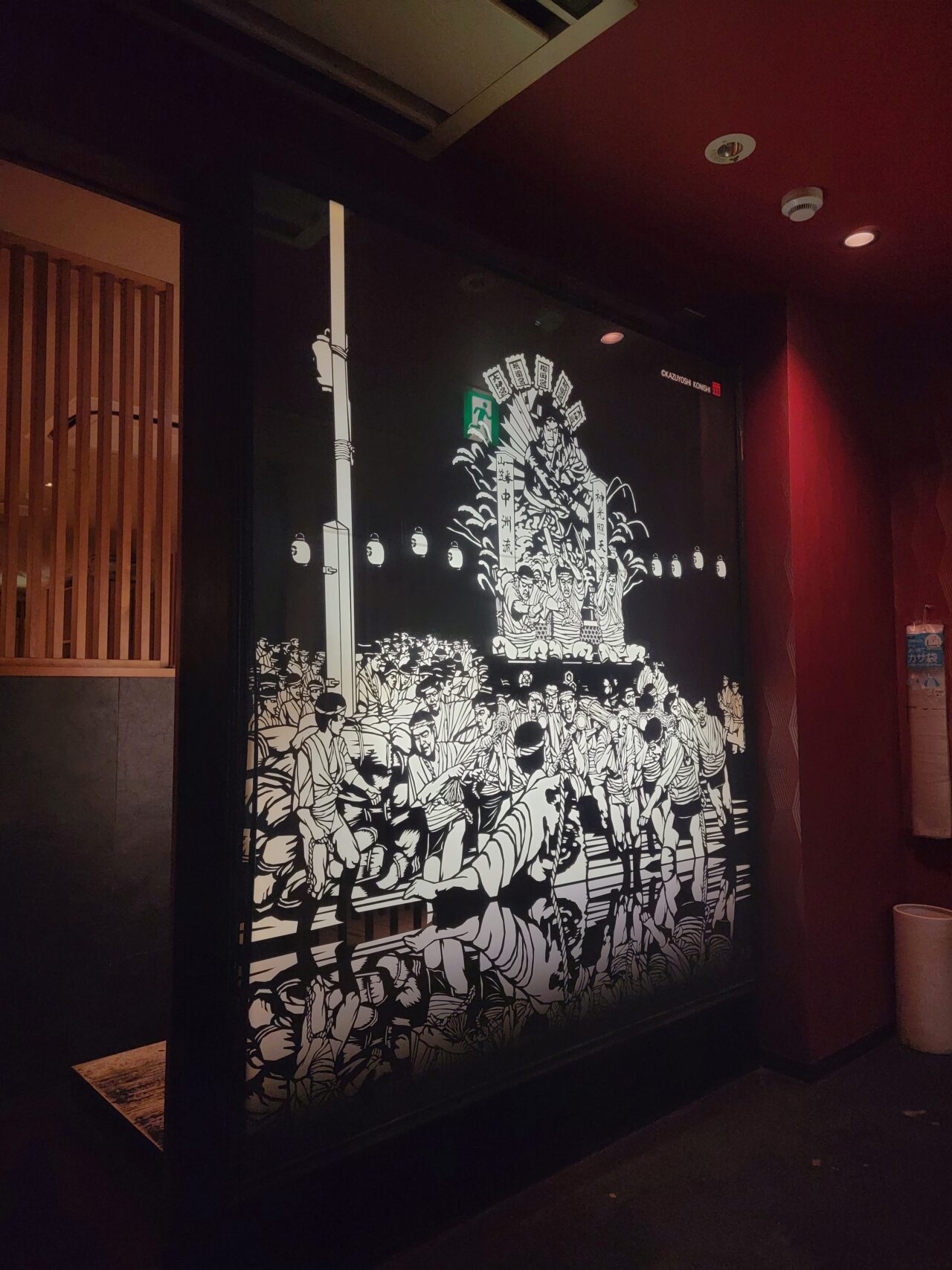
Passing under the traditional noren curtain with its distinctly Japanese charm, I noticed a lantern that reads “Founded in 1991.”
The first thing that caught my eye inside was a kiri-e (paper cutting) artwork signed by Kazuyoshi Konishi, a renowned kiri-e artist, depicting Hakata Gion Yamakasa, Fukuoka’s famous festival. The bold, dynamic design really captures the spirit and energy of the festival.
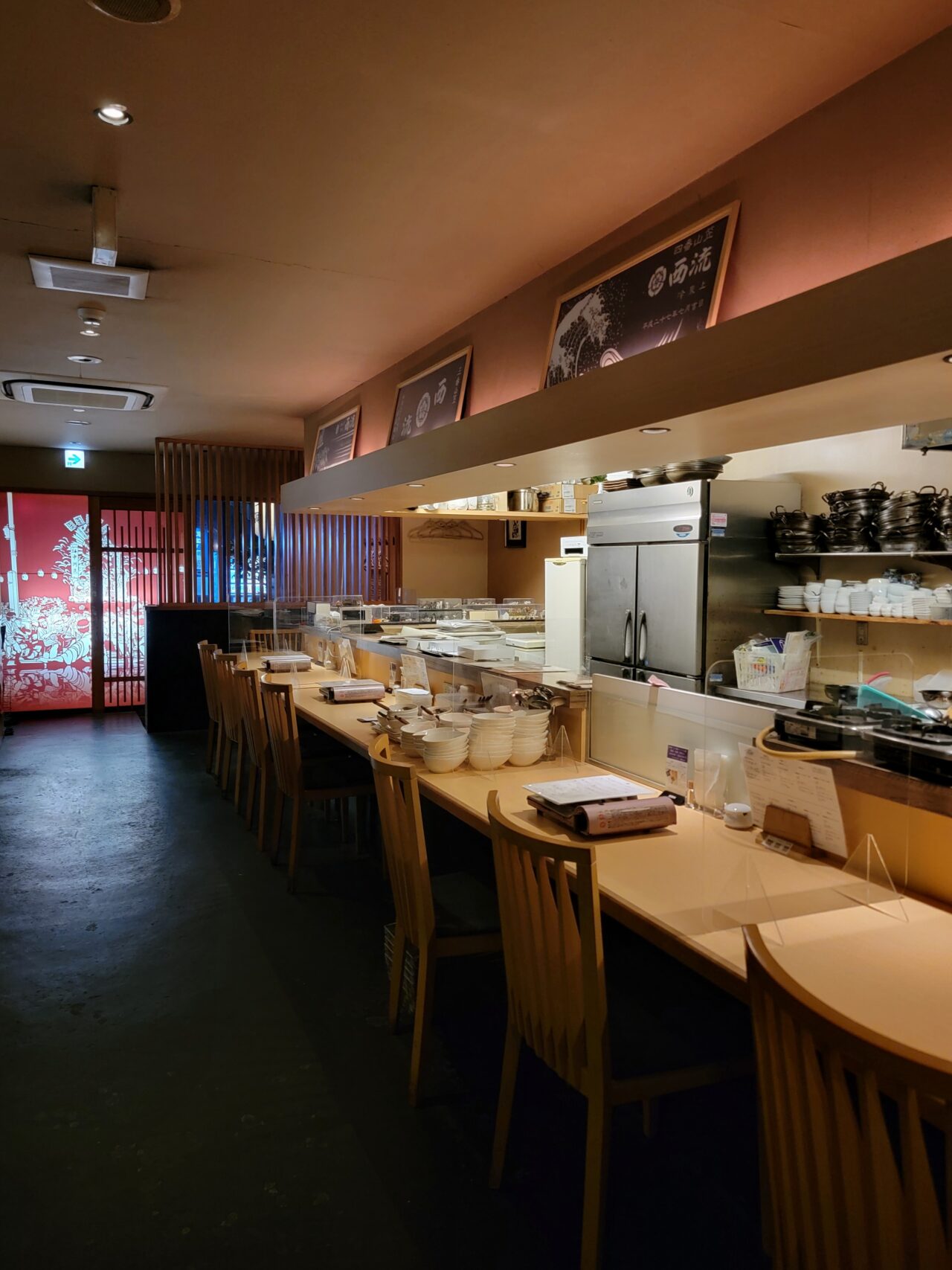
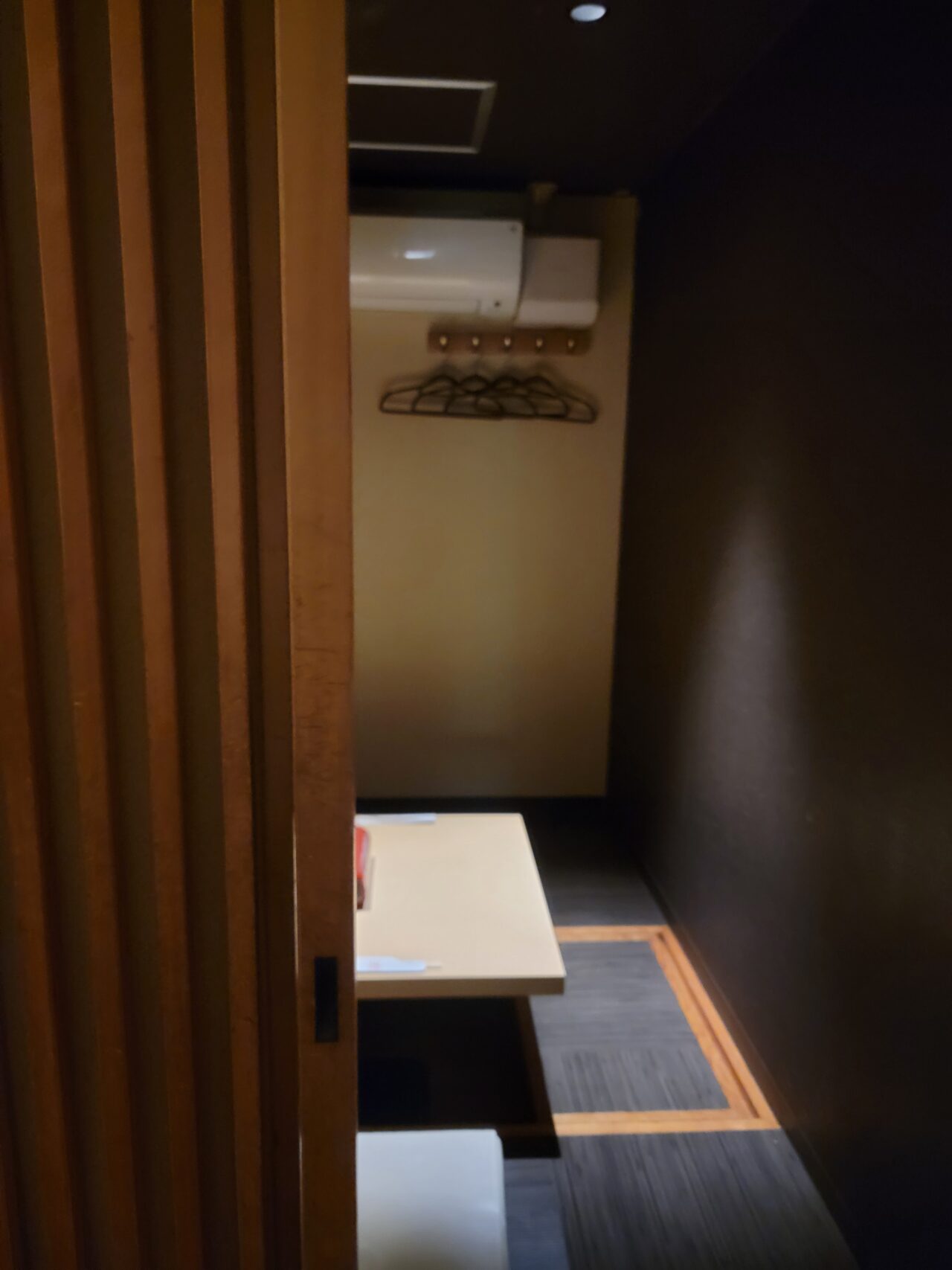
Inside, there are private rooms in the back, and we were seated in one of them. The lighting was slightly dimmed, creating a calm and relaxing atmosphere.
There was a large group in the tatami room next door, but the place also seems perfect for couples looking for a cozy dining spot.
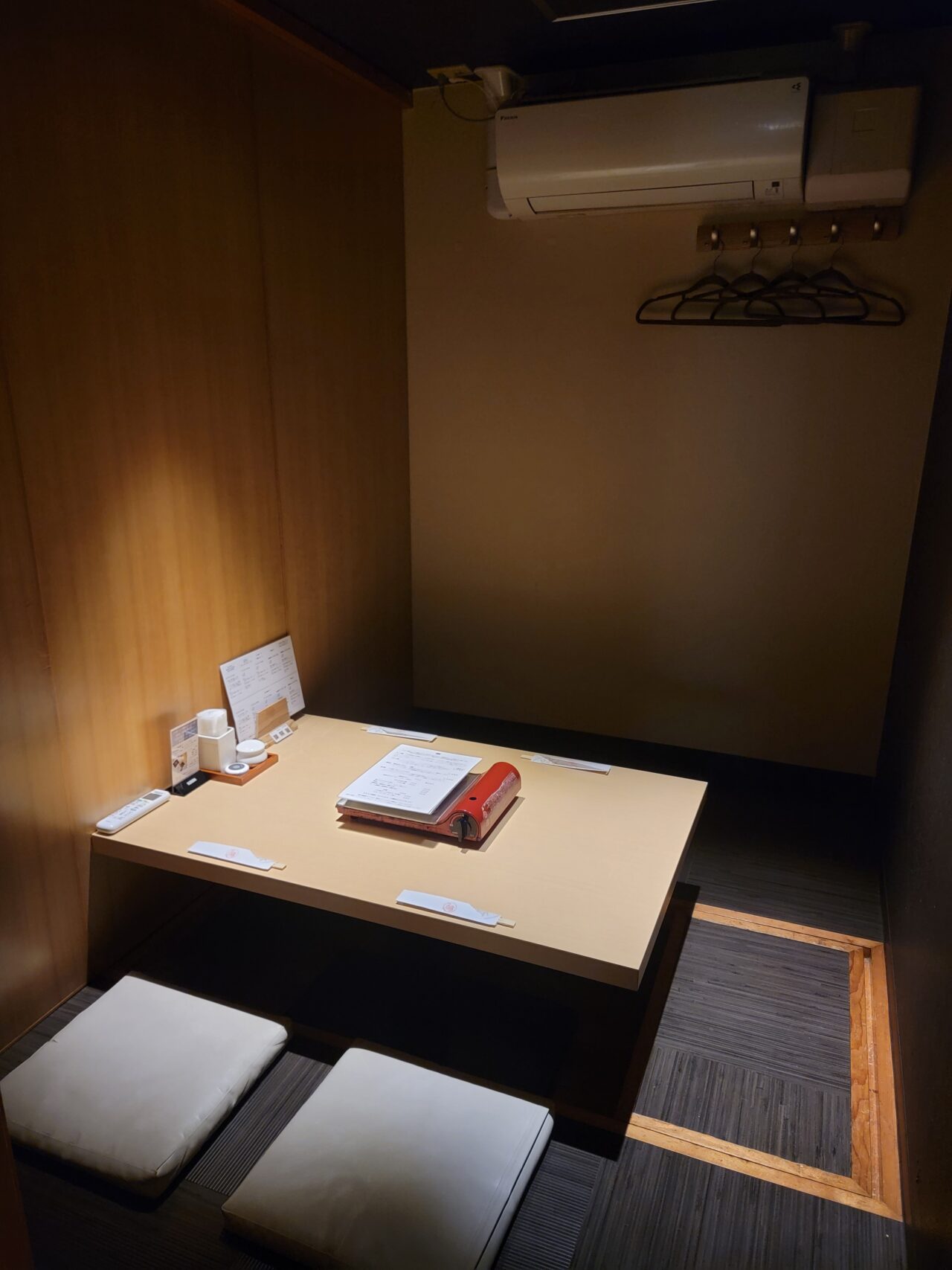
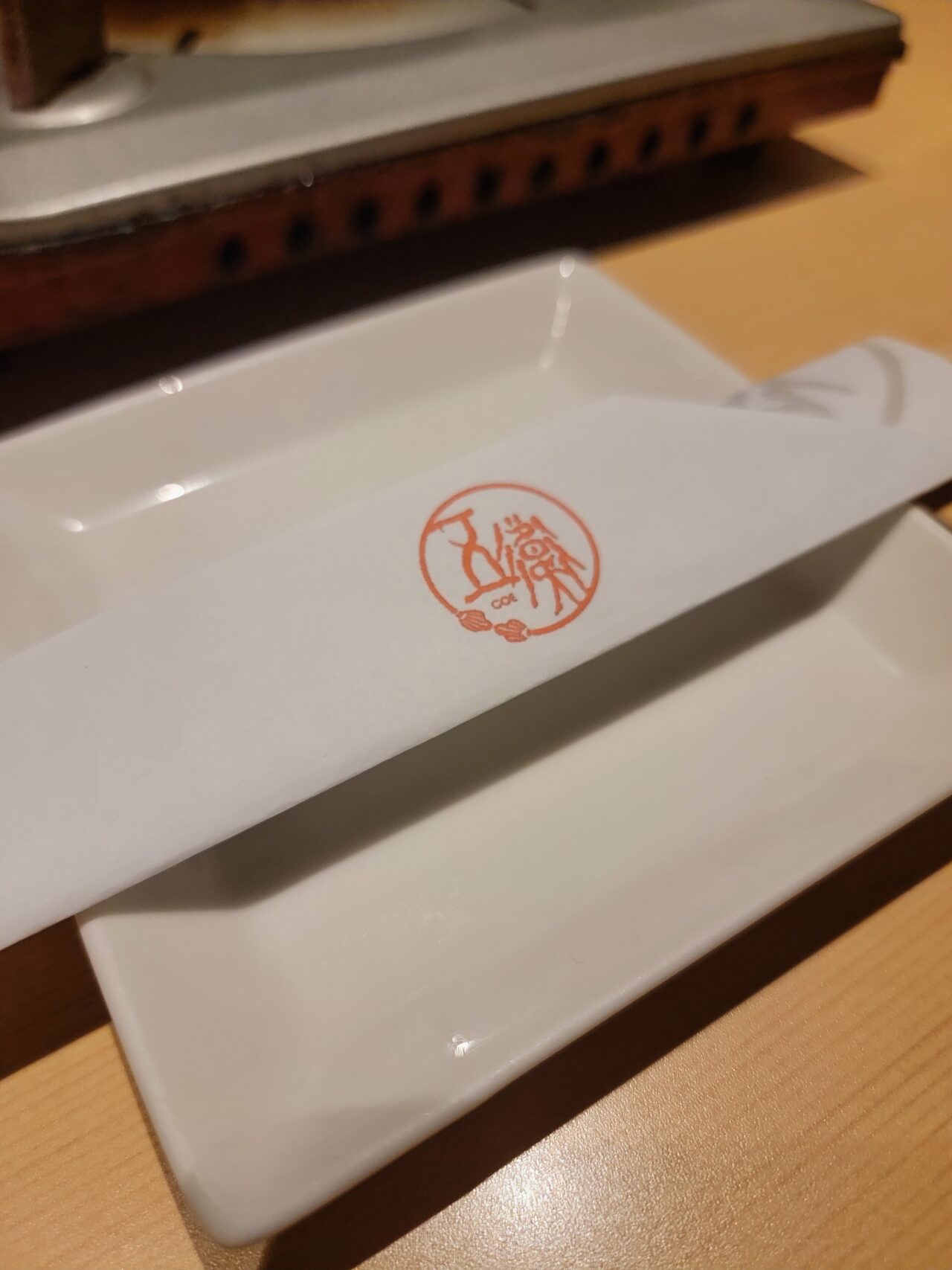
・What is Fukuoka’s local cuisine, motsunabe?
For the otoshi (a small appetizer served with drinks), I was expecting oboro tofu, but instead, they brought out cheese topped with soy sauce and green onions—and it was absolutely delicious.
I ordered a glass of white wine to go with it.
You might be thinking, “Isn’t imo shochu the go-to drink in Kyushu?” But surprisingly, the white wine paired really well with the motsunabe. I bet sake would be a great match too.
We also had senmai sashimi (thinly sliced beef tripe) and liver sashimi. Both were incredibly fresh and perfect as snacks to go with our drinks.
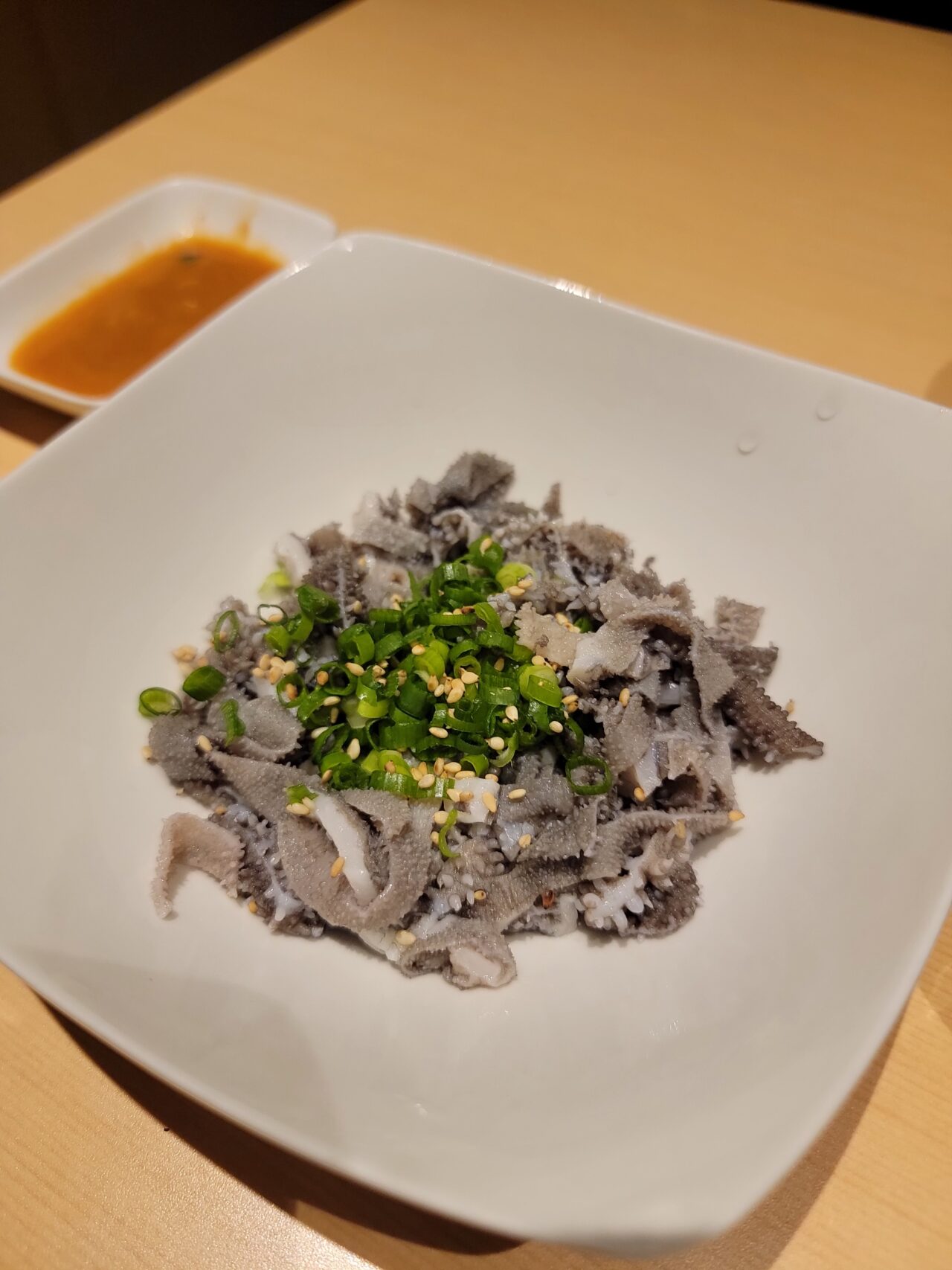
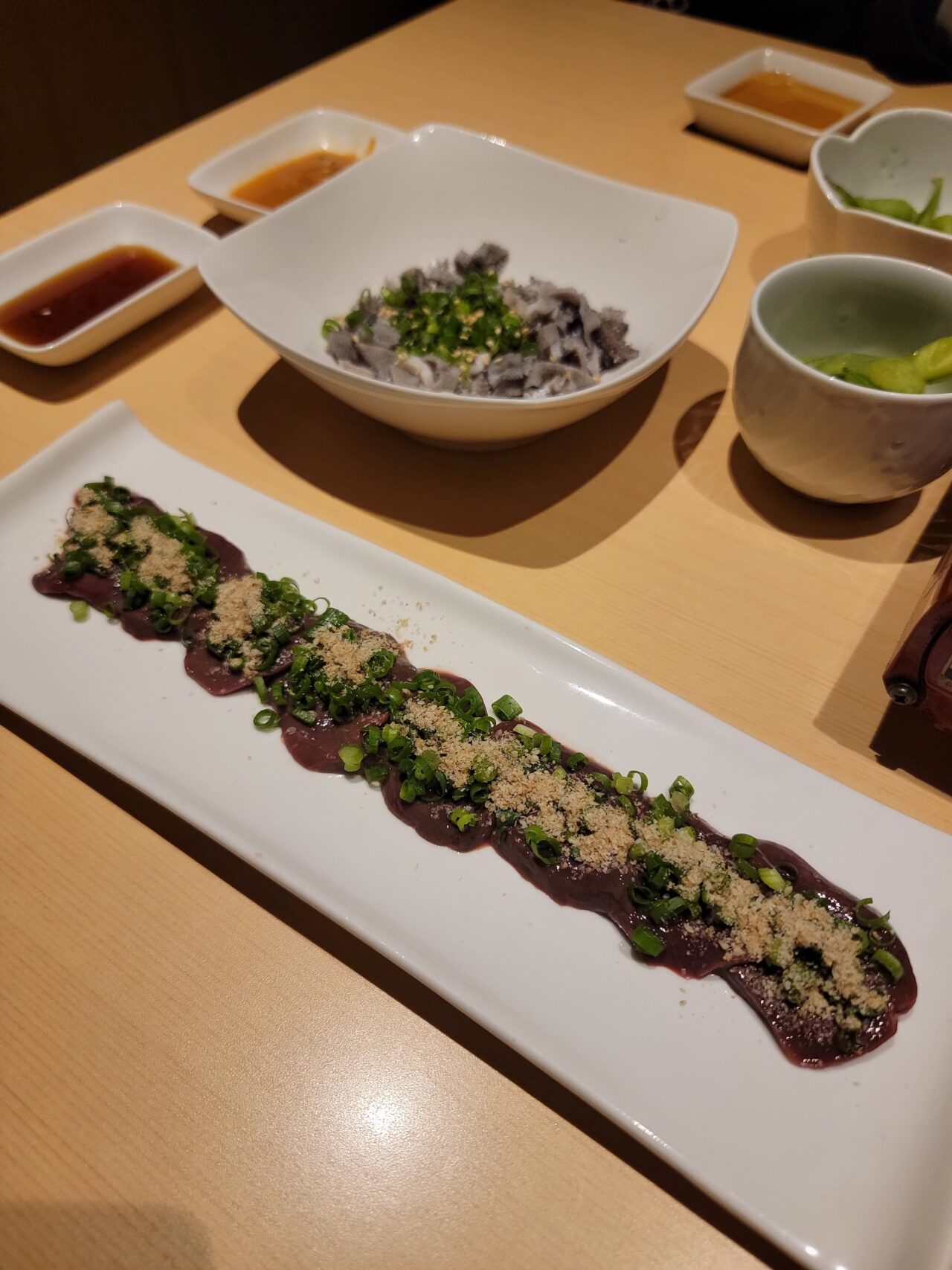
Motsunabe comes with different soup bases, but my friend recommended the soy sauce flavor, so we went with the soy sauce motsunabe made with rich ago dashi (flying fish broth).
They also offer ponzu and miso flavors, so you can choose based on your preference.
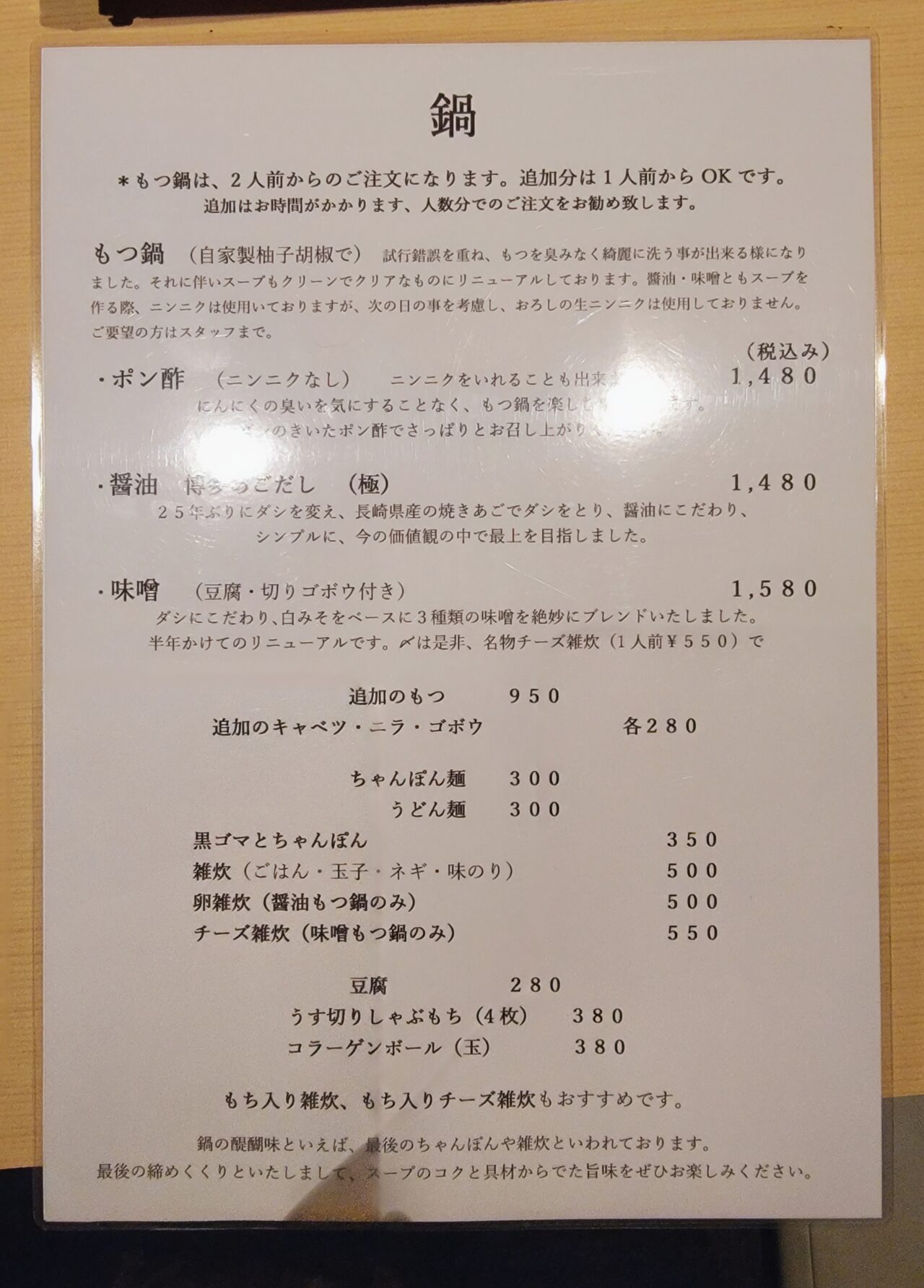
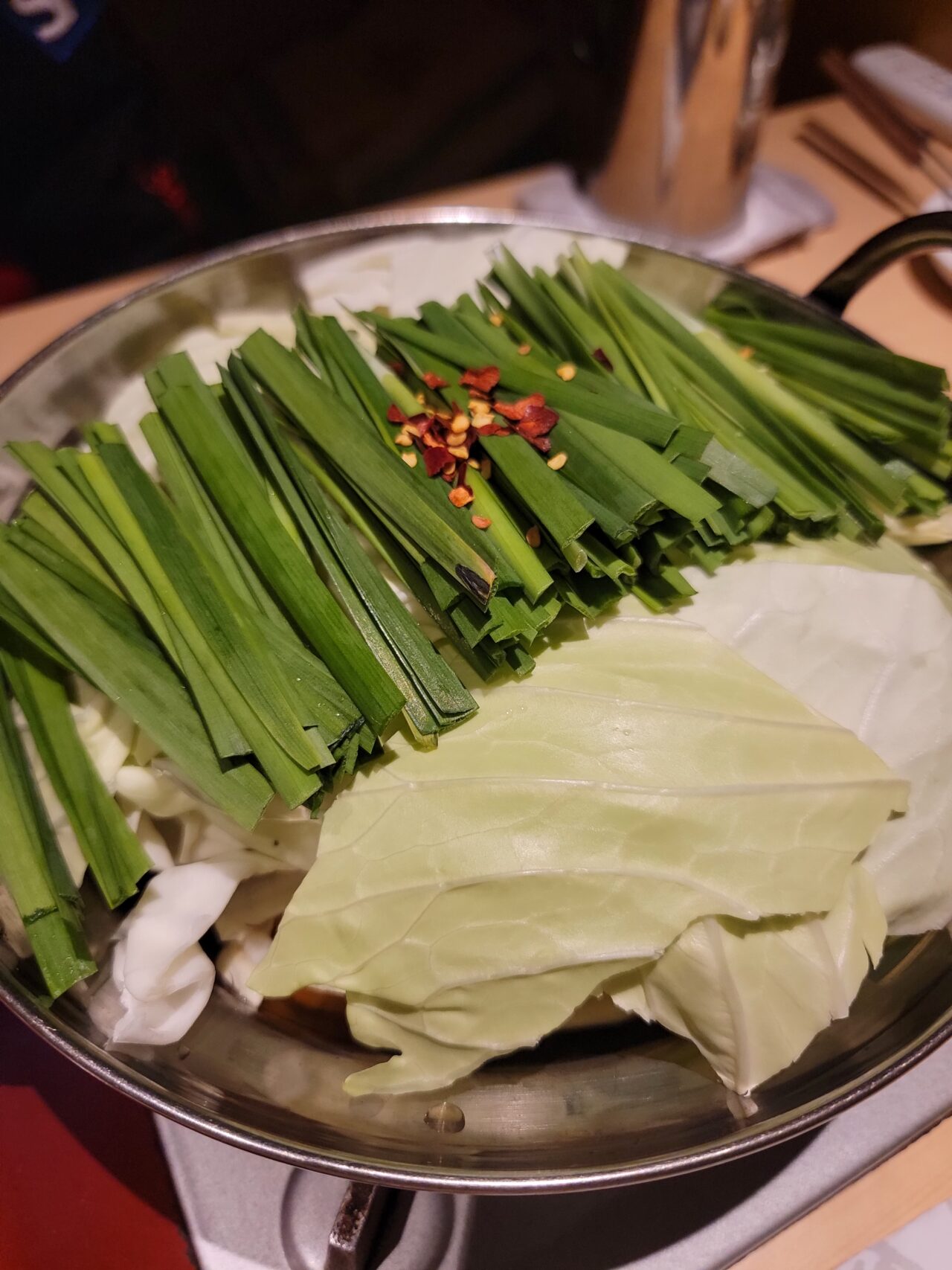
For Japanese people, motsunabe is well-known, but for those unfamiliar, it’s a traditional Japanese hot pot dish, especially famous as a local specialty of Fukuoka’s Hakata area. “Motsu” refers to the offal of beef or pork, known for its tender, chewy texture and rich umami flavor.
The motsu at Goe had no unpleasant odor, making it incredibly easy to enjoy—even for those who usually aren’t fans of offal. It was tender, flavorful, and had a clean taste.
The dish is also packed with vegetables like garlic chives and cabbage, making it surprisingly healthy. A soy sauce-based motsunabe has around 350–450 kcal, is high in protein, and rich in collagen, which explains why it’s so popular among women for its beauty benefits.
Soy sauce is the most classic flavor in Hakata, offering a light yet deeply savory taste that keeps you coming back for more.
Historically, motsunabe is said to have originated after World War II during food shortages when offal became a nutritious and affordable ingredient. It evolved alongside Fukuoka’s vibrant food stall (yatai) culture.
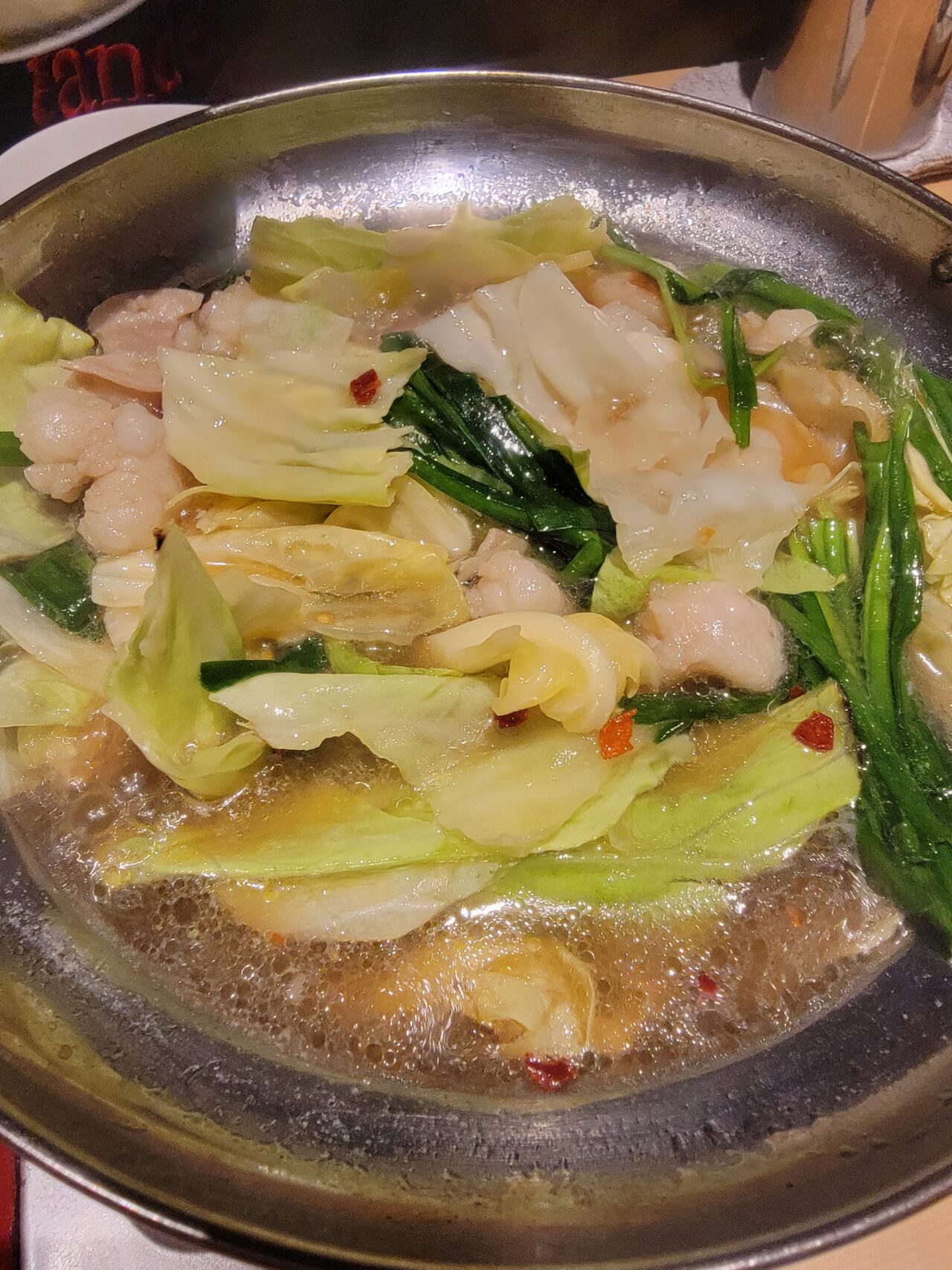
To finish off the meal, we made zōsui (a Japanese-style rice porridge) using the leftover broth—this is the classic Japanese way to wrap up a hot pot. You can also order champon noodles if you prefer. Either way, the rich, flavorful broth makes for a satisfying finale.
While motsunabe is perfect for the colder seasons, it’s a dish you can enjoy year-round.
During this trip to Fukuoka, it was pretty chilly overall—around 5°C (41°F) in late January—so I was freezing most of the time. But thanks to the motsunabe, I warmed up from the inside out, creating a delicious, heartwarming memory.
